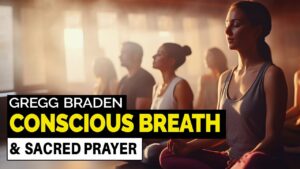Understanding the Science of Breathing: Optimizing Oxygen Absorption and CO2 Balance
Are you struggling with your breathing? Do you find yourself short of breath or feeling dizzy, despite trying to take in more oxygen? You’re not alone. In this enlightening discussion, we delve into the complexities of breathing, uncovering the truth behind oxygen absorption, CO2 balance, and optimizing respiratory efficiency.
Unlocking the Secrets to Respiratory Efficiency and Well-Being
The Misconception of Over-Breathing
Many of us believe that breathing faster and deeper will increase oxygen levels in our bodies. However, this approach can often lead to dizziness, headaches, and even fainting. But why does this happen? The answer lies in understanding the dynamics of oxygen and carbon dioxide in our bloodstream.
The Bohr Effect: Balancing Oxygen and CO2
The Bohr effect, discovered over a century ago, reveals that oxygen uptake by our cells is dependent on the presence of carbon dioxide. While hyperventilation may increase oxygen in the blood, it hinders oxygen delivery to the cells. In essence, it’s not just about oxygen intake; it’s about optimizing the exchange of gases within our body.
Dispelling the Myth of Low Oxygen Levels
Contrary to popular belief, most individuals have optimal blood oxygen saturation levels, typically ranging from 95% to 99%. Attempting to increase oxygen intake beyond this range is unnecessary and can disrupt the delicate balance of gases in our system. It’s akin to filling a gas tank beyond its capacity – more oxygen does not equate to better health.
The Importance of CO2 Regulation
Rather than focusing solely on oxygen, we should pay attention to carbon dioxide levels in our body. Over-breathing, characterized by a higher respiratory rate than necessary, leads to decreased CO2 levels, disrupting the body’s ability to utilize oxygen effectively. Achieving a balance between oxygen and CO2 is essential for optimal health and well-being.
Optimizing Respiratory Efficiency
To improve breathing, we must train our respiratory muscles, particularly the diaphragm, which plays a crucial role in the breathing process. By incorporating resistance breathing exercises, we strengthen and coordinate the diaphragm, enhancing its efficiency. Additionally, flexibility exercises for the thoracic region can alleviate restrictions and promote better airflow.
Practical Exercises for Better Breathing
Resistance 4×4 Breathing Pattern: Inhale and exhale through a resistance device, such as a straw or breathing trainer, to the count of four. Aim for four to six breaths per minute to optimize oxygen-CO2 balance.
Thoracic Stretching Exercise: Utilize props like a block and pillow to open up the chest and shoulders, allowing for deeper and more efficient breathing. Hold the stretch for two minutes to release tension and improve posture.
Conclusion: Breathing for Optimal Health
In conclusion, the key to better breathing lies not in overloading our system with oxygen but in optimizing the exchange of gases and enhancing respiratory efficiency. By understanding the science behind breathing and incorporating targeted exercises into our routine, we can achieve a state of balance and vitality.
Let’s shift our focus from “more oxygen” to “better breathing,” unlocking the full potential of our respiratory system for improved health and well-being.








